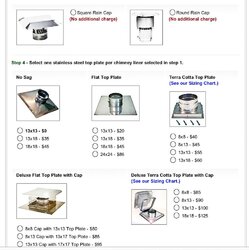The insert is ready, the flue is clean and I'm ready to order the liner. But there are a few types and I don't fully understand the differences and applications. What I'm working with is a exterior masonry chimney. 20' tall and an unlined flue that is 18"x18". Pretty much a straight shot to the stove but the liner will have to make a bend to clear the damper opening.
1. It seems that 316ti and 316L are common materials for liners. Which is better?
2. Should I get 1 ply or 2?
3. What thickness? It would seem that the thicker the better but will I run into problems bending it? There seems to be .005, .006, and .013 thickness available.
Last question is about the smoke shelf in the chimney. After I cut the damper out and opened up the hole I was able to get a shop vac back in there. I vaccumed out a load of junk and probably 75 years of chimney cleanings. Should I try and get some concrete or sand back in there or just leave it alone since I am lining anyway? Opening behind the smoke shelf is probably 1' deep and the width of the firebox (28").
1. It seems that 316ti and 316L are common materials for liners. Which is better?
2. Should I get 1 ply or 2?
3. What thickness? It would seem that the thicker the better but will I run into problems bending it? There seems to be .005, .006, and .013 thickness available.
Last question is about the smoke shelf in the chimney. After I cut the damper out and opened up the hole I was able to get a shop vac back in there. I vaccumed out a load of junk and probably 75 years of chimney cleanings. Should I try and get some concrete or sand back in there or just leave it alone since I am lining anyway? Opening behind the smoke shelf is probably 1' deep and the width of the firebox (28").


